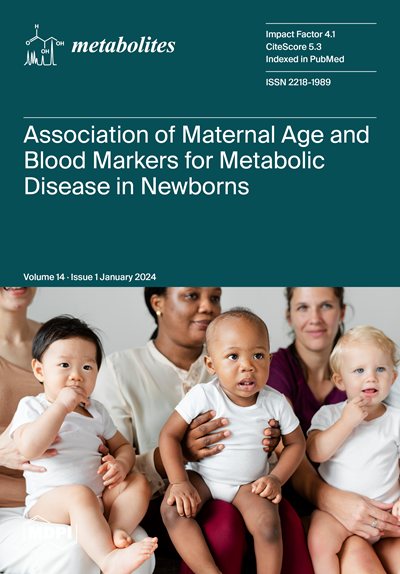Iron Homeostasis-Related Parameters and Hepcidin/Ferritin Ratio: Emerging Sex-Specific Predictive Markers for Metabolic Syndrome
IF 3.7
3区 生物学
Q2 BIOCHEMISTRY & MOLECULAR BIOLOGY
引用次数: 0
Abstract
Metabolic syndrome (MetS) is a worldwide public health challenge. Accumulating evidence implicates elevated serum ferritin and disruptions in iron metabolism as potential elements linked to an increased risk of MetS. This study investigates the relationship between iron homeostasis—including hepcidin levels, serum iron concentration, unsaturated iron-binding capacity (UIBC), and the hepcidin/ferritin (H/F) ratio—and MetS. In this descriptive cross-sectional study, 209 participants aged 24–70 were categorized into two groups: 103 with MetS and 106 without MetS. All participants underwent medical assessment, including anthropometric measures, indices of glycemic control, lipid profiles, and iron-related parameters. Participants were further stratified by the Homeostasis Model Assessment—Insulin Resistance index into three subgroups: insulin-sensitive (IS) (<1.9), early insulin resistance (EIR) (>1.9 to <2.9), and significant insulin resistance (SIR) (>2.9). Notable increments in serum ferritin and hepcidin were observed in the SIR group relative to the IS and EIR groups, with a significant association between metabolic parameters. The UIBC and serum ferritin emerged as significant predictors of MetS, particularly in men, with an area under the curve (AUC) of 0.753 and 0.792, respectively (p ≤ 0.001). In contrast, hepcidin was notably correlated with MetS in women, with an AUC of 0.655 (p = 0.007). The H/F ratio showed superior predictive capability for MetS across both sexes (at cutoff level = 0.67). Among women, this ratio had an AUC of 0.639 (p = 0.015), and for men, it had an AUC of 0.792 (p < 0.001). Hypertension proved an independent risk factor for MetS, affirming its role in metabolic dysregulation. The findings highlight a significant interconnection between iron homeostasis parameters and MetS, with sex-specific variations underscoring the importance of personalized diagnostic criteria. The crucial role of the H/F ratio and the UIBC as emerging predictive markers for MetS indicates their potential utility in identifying at-risk individuals. Further longitudinal research is essential to establish causality and explore the interplay between these biomarkers and MetS.铁稳态相关参数和肝素/铁蛋白比率:新出现的代谢综合征性别特异性预测指标
代谢综合征(MetS)是一项全球性的公共卫生挑战。越来越多的证据表明,血清铁蛋白升高和铁代谢紊乱是导致 MetS 风险增加的潜在因素。本研究调查了铁平衡(包括降血脂素水平、血清铁浓度、不饱和铁结合能力(UIBC)和降血脂素/铁蛋白(H/F)比值)与 MetS 之间的关系。在这项描述性横断面研究中,209 名年龄在 24-70 岁之间的参与者被分为两组:103 人患有 MetS,106 人没有 MetS。所有参与者都接受了医学评估,包括人体测量、血糖控制指数、血脂概况和铁相关参数。根据稳态模型评估-胰岛素抵抗指数将参与者进一步分为三个亚组:胰岛素敏感组(IS)(1.9 至 2.9)、胰岛素抵抗组(IS)(1.9 至 2.9)和胰岛素敏感组(IS)(1.9 至 2.9)。与 IS 组和 EIR 组相比,SIR 组的血清铁蛋白和降血脂素明显增加,代谢参数之间存在显著关联。UIBC 和血清铁蛋白是 MetS 的重要预测指标,尤其是男性,其曲线下面积(AUC)分别为 0.753 和 0.792(p ≤ 0.001)。相比之下,女性血钙素与 MetS 的相关性显著,AUC 为 0.655(p = 0.007)。H/F比值在两性中都显示出对MetS的卓越预测能力(临界值=0.67)。在女性中,该比率的AUC为0.639(p = 0.015),在男性中,该比率的AUC为0.792(p < 0.001)。事实证明,高血压是 MetS 的一个独立风险因素,肯定了它在代谢失调中的作用。研究结果凸显了铁平衡参数与 MetS 之间的重要联系,而性别差异则强调了个性化诊断标准的重要性。H/F比率和UIBC作为新出现的MetS预测标志物的关键作用表明,它们在识别高危人群方面具有潜在的作用。进一步的纵向研究对于确定因果关系和探索这些生物标志物与 MetS 之间的相互作用至关重要。
本文章由计算机程序翻译,如有差异,请以英文原文为准。
求助全文
约1分钟内获得全文
求助全文
来源期刊

Metabolites
Biochemistry, Genetics and Molecular Biology-Molecular Biology
CiteScore
5.70
自引率
7.30%
发文量
1070
审稿时长
17.17 days
期刊介绍:
Metabolites (ISSN 2218-1989) is an international, peer-reviewed open access journal of metabolism and metabolomics. Metabolites publishes original research articles and review articles in all molecular aspects of metabolism relevant to the fields of metabolomics, metabolic biochemistry, computational and systems biology, biotechnology and medicine, with a particular focus on the biological roles of metabolites and small molecule biomarkers. Metabolites encourages scientists to publish their experimental and theoretical results in as much detail as possible. Therefore, there is no restriction on article length. Sufficient experimental details must be provided to enable the results to be accurately reproduced. Electronic material representing additional figures, materials and methods explanation, or supporting results and evidence can be submitted with the main manuscript as supplementary material.
 求助内容:
求助内容: 应助结果提醒方式:
应助结果提醒方式:


